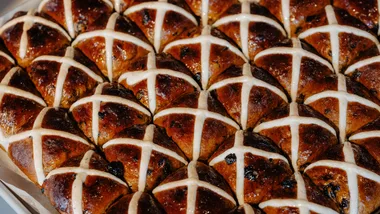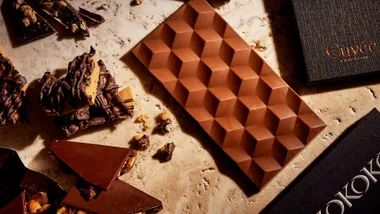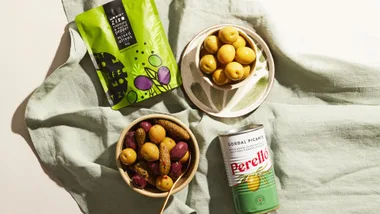All you need to clean squid is a sharp eye and an even sharper knife. And, of course, an apron.
It’s a face only a mother could love. And, to the uninitiated, cleaning and prepping a whole squid for cooking can seem like a daunting (not to mention messy) task. But it’s really not as hard as all that, and the end result is tender, juicy and moreish flesh for your chill-salt squid or salad – quite unlike the rubbery squid you buy pre-prepared or frozen. So let’s get to it: put away your favourite white shirt, roll up your sleeves good and high, and jump in.
Calamari, the Italian term for squid, is used interchangeably with squid, but in Australia the term also sometimes refers to two of the four main species found around the country. The other two species are loligo and Gould’s. The former, also sold as Hawkesbury squid, is a long, thin, winged squid with mottled pink-purple skin. It is found in NSW estuary waters. Gould’s squid is also known as arrow, torpedo and seined squid and is light brown-pink in colour with a purple-blue stripe running down its length. It’s a little longer than loligo squid but significantly heavier and makes its home along the southern coastline of the country, from Brisbane right through to Geraldton in Western Australia.
At the market, look for firm squid with bright eyes. They should have a certain slipperiness about them but shouldn’t be slimy. Once cleaned, the hood can be sliced widthways into rings, lengthways into strips, or scored and cut into a crosshatch pattern, as we’ve done here, and the tentacles can also be used. Squid can be pan-fried, deep-fried or blanched in salted water. Braising it whole with red wine and peas works a treat, as does stuffing it and serving it on a bed of lentils. Similar to octopus, cook squid either quickly on high heat, or slow and low lest it become tough. Finely sliced, it can be served raw. Choose smaller squid for fast cooking and larger specimens for braising, as they can often be rather tough.
Octopus and cuttlefish, also members of the cephalopod family, can be prepared in much the same way as squid, although octopus needs to be blanched before you can remove the skin. Cuttlefish also have a larger, spongier backbone, which can be a little more difficult to remove compared to the quill of the squid.
The mouth of the squid is also referred to as the beak. It sits in the centre of the tentacles and must be removed before cooking. It simply pops out when pushed through from the other side. Some cooks discard the tentacles and wings of the squid, too, but their flavour matches the meat from the tube and, besides, they look great.
Cleaning squid, you’ll come across the sac holding its ink, which can be used to colour pasta or risotto. It can burst easily, so remove it carefully and in one piece. Then you can throw it into the pot for cooking and enjoy the wonderful sight of black washing over the mix when it bursts.










